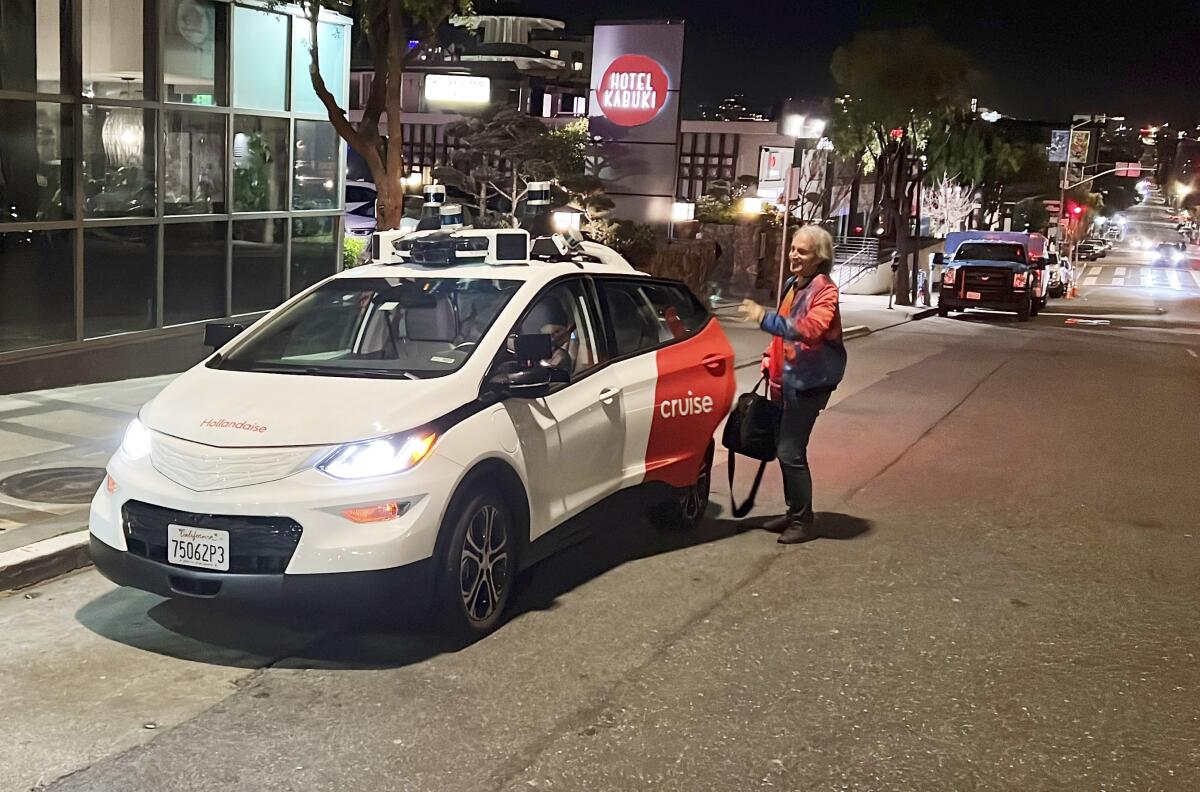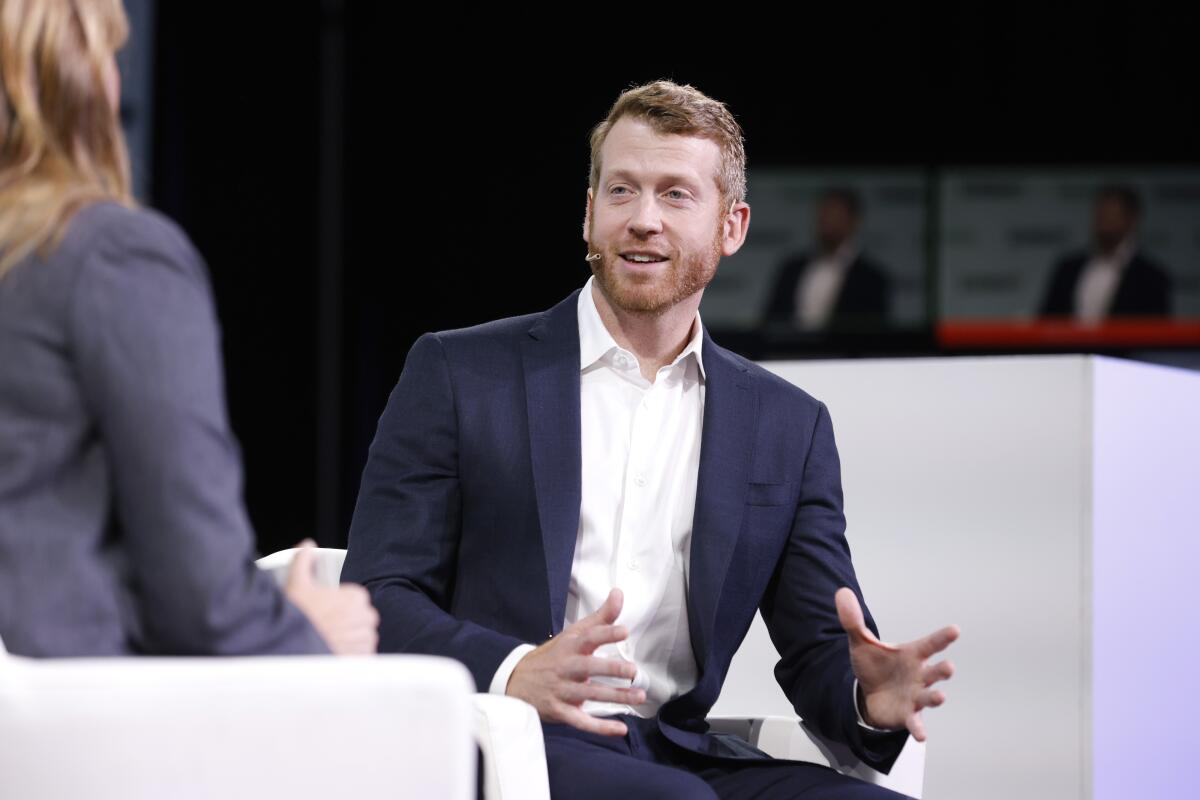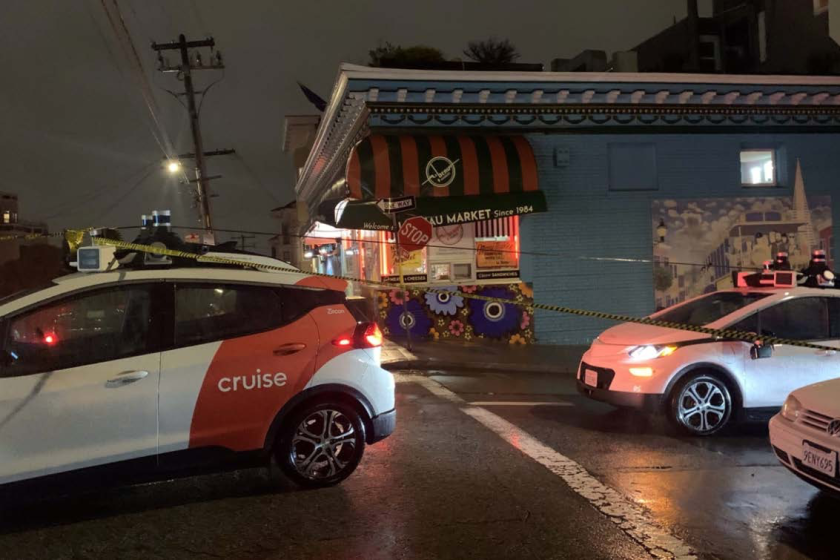Cruise sidelines entire U.S. robotaxi fleet to focus on rebuilding ‘public trust’

In the wake of California withdrawing Cruise’s permit to operate self-driving cars in the state, the company announced that it’s suspending all U.S. robotaxi operations.
The move comes after the California Department of Motor Vehicles alleged that Cruise withheld from regulators video footage of a Cruise robotaxi dragging a person down a city street.
The future for the company is uncertain. Its parent company, General Motors, has lost $1.9 billion on Cruise so far this year, including a $732-million loss in the third quarter, according to its latest earnings report. Competitor Ford shut down its Argo robotaxi unit in 2022, concluding that the possibility of far-off profits weren’t worth the enormous cash drain.
The California DMV gave two reasons for suspending Cruise’s license this week: concerns about safety and claims that the company withheld from regulators video footage that showed a Cruise robotaxi drag an already injured woman 20 feet across street pavement before emergency workers could reach her.
California officials suspended Cruise’s permits to operate driverless vehicles in the state, citing safety concerns. General Motors’ autonomous vehicle brand had already been under investigation by federal transportation officials.
“The most important thing for us right now is to take steps to rebuild public trust,” Cruise said in a statement online Thursday night. “Part of this involves taking a hard look inwards and at how we do work at Cruise.”
Cruise vehicles with humans behind the wheel will continue to operate. Until this week, the company had been operating driverless services in San Francisco, Phoenix, Miami, Houston and Austin, Texas.
Cruise needs to be “extra vigilant when it comes to risk, relentlessly focused on safety” as it rebuilds public trust, a spokeswoman told The Times.
The incident marks a dark chapter in the emerging history of the automated vehicle industry. Whether Cruise’s actions will harm the industry’s reputation, or only its own, remains to be seen.
Robotaxi companies claim that autonomous vehicles are already safer than cars driven by humans. Officials in San Francisco say they’re having trouble getting these companies to provide adequate data to prove that. But Cruise is dealing with more than safety in this case — it’s dealing with allegations that it misled regulators and the media in ways that might erode public trust.
On Oct. 2, a car with a human behind the wheel hit a woman who was crossing at the intersection of 5th and Market streets in San Francisco against a red light. The pedestrian slid over the hood and into the path of a Cruise robotaxi, with no human driver. She became pinned under the car, and was later taken to a hospital.
Cruise quickly called the crash tragic but said that the robotaxi stopped as it was supposed to and that a human driver couldn’t have reacted as quickly.
A Cruise robotaxi dragged an injured woman 20 feet. The company misled reporters about the facts, and maybe state regulators too.
What Cruise did not say, and what the DMV revealed Tuesday, is that after sitting still for an unspecified period of time, the robotaxi began moving forward at about 7 mph, dragging the woman with it for 20 feet.
Cruise had shown a video of the incident to reporters but barred them from posting it publicly. (Because of that restriction, The Times turned down Cruise’s offer.) The video shown to reporters ended with the robotaxi sitting motionless, but did not include the vehicle dragging the woman.
The DMV said Cruise showed it the same abbreviated video, and only later did the agency see the full version. The two sides are fighting about that version of events. Cruise told reporters it showed the DMV the full video from the start.
In response to a request for comment, a spokesperson for the DMV said it stands by the facts outlined in the orders of suspension.

Controversy has surrounded the company for months, after San Francisco’s fire chief lit into Cruise and another robotaxi company, Waymo, for interfering with firetrucks and emergency workers. Police said robotaxis were getting in their way too.
Dozens of such incidents have been reported, including robotaxis blocking an ambulance from exiting a firehouse, driving onto fire hoses and parking themselves there, bursting through police tape and getting tangled in downed utility wires. Cruise robotaxis sometimes gather together up to a dozen at a time to block pedestrians and other cars at busy intersections, a phenomenon whose cause remains a mystery, at least to the public.
Nonetheless, the California Public Utilities Commission, which regulates taxi fares, voted to allow a massive expansion of robotaxi service across San Francisco. Cruise Chief Executive Kyle Vogt soon started talking about big plans for explosive growth, including the introduction next year of a six-passenger pod-like vehicle with no steering wheel called the Origin. “The goal is to get to scale as quickly as we can in terms of the total number of AVs to make this business profitable and sustainable,” he said at the TechCrunch Disrupt conference in September.
After disturbing week for Cruise robotaxis, California applies the brakes on company’s ambitious expansion plans.
Waymo, owned by Google parent Alphabet, is also planning to grow its fleets and move into new cities. It has already launched in Santa Monica and will soon expand to Los Angeles. Los Angeles officials are trying to get a close look at company plans, but are stymied by state law that gives cities little authority over robotaxi operations.
Other robotaxi companies are also gearing up to expand, including Zoox and Motional. Those companies are likely to draw more scrutiny in the wake of Cruise’s setback, said Bryant Walker Smith, an automated vehicle law expert at the University of South Carolina.
Alain Kornhauser, who heads the autonomous vehicle engineering program at Princeton, said the dragging incident is indeed tragic but it’s something that can be fixed. “The problem is, I don’t think anybody who’s writing code thought about a person being trapped under the car,” he said. “Now they can do something like mount a camera to make sure there’s no one under the car before it moves.”
People will be forgiving of odd robotaxi behavior if they trust the companies involved, he said. “But this covering-up business and not being forthright” does long-term damage to public acceptance, he said. “Didn’t we learn from Watergate that the coverup can be worse than the crime? They could be apologetic. They could say, ‘We’re not going to do that again.’”
More to Read
Inside the business of entertainment
The Wide Shot brings you news, analysis and insights on everything from streaming wars to production — and what it all means for the future.
You may occasionally receive promotional content from the Los Angeles Times.













